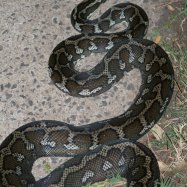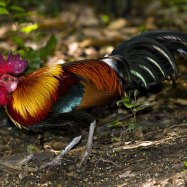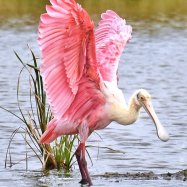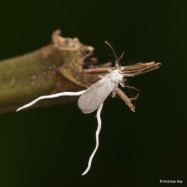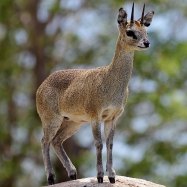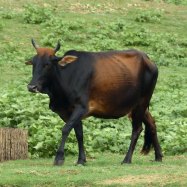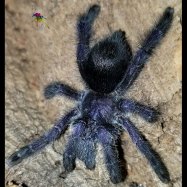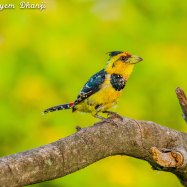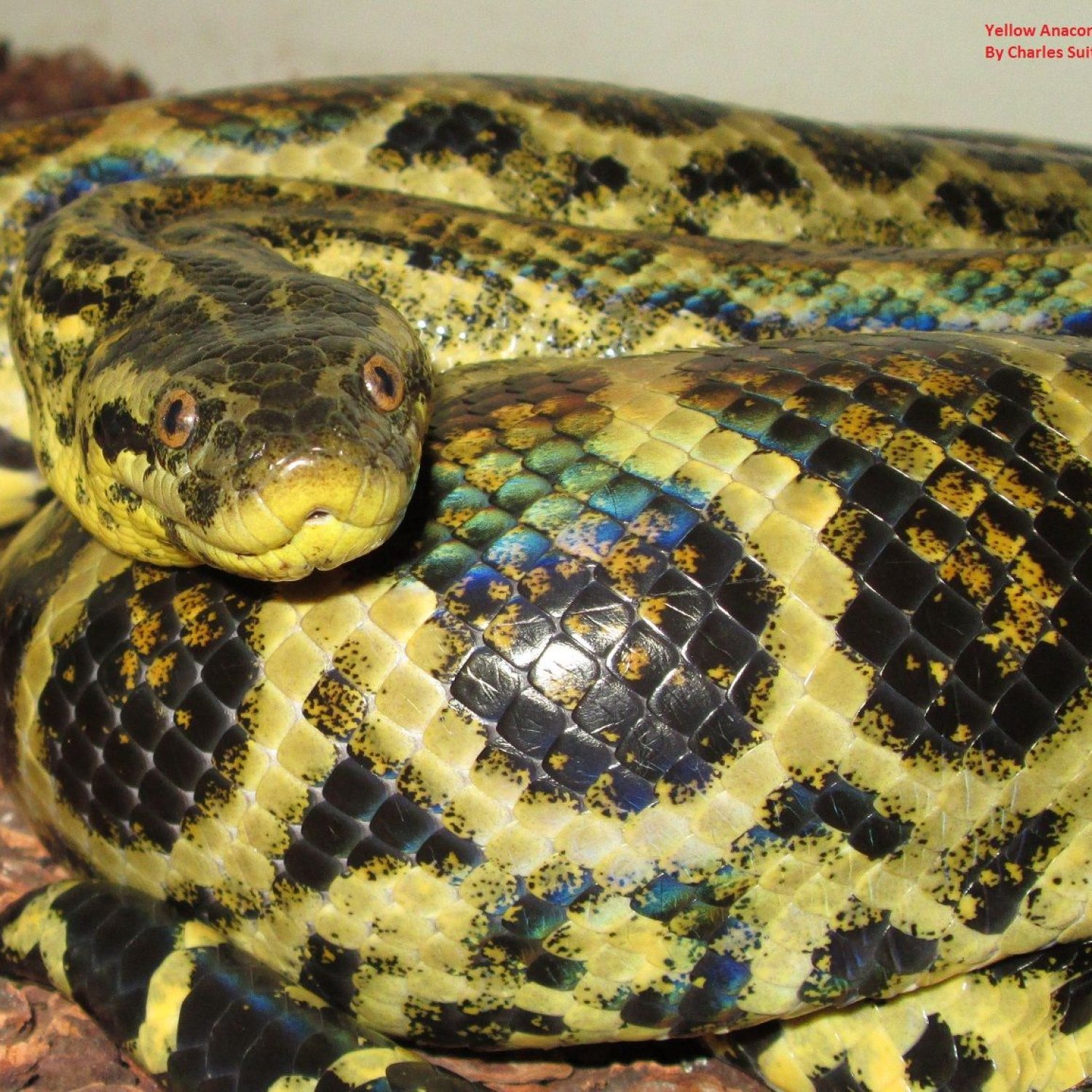
Yellow Anaconda
9 to 15 feet
The Yellow Anaconda, found in the Pantanal region of Brazil, is a beautiful and unique animal from the Boidae family. It can grow up to 15 feet in length, making it one of the longest snakes in the world! Its stunning yellow color and long cylindrical body shape make it easily recognizable. Another interesting fact about this snake is that it is non-venomous, relying on its powerful muscles to squeeze its prey. Next time you're in Brazil, keep an eye out for this amazing creature! #YellowAnaconda #BrazilianAnimals #Pantanal.
Animal Details Summary:
Common Name: Yellow Anaconda
Kingdom: Animalia
Habitat: Freshwater habitats, including swamps, marshes, and slow-moving rivers
The Mighty Yellow Anaconda: A Master Predator of the South American Waters
The lush and rich waters of South America are home to one of the most powerful predators of its aquatic ecosystem – the Yellow Anaconda. With its striking yellow coloration and impressive size, this incredible creature has long captivated the attention of both researchers and nature enthusiasts. Let's dive deeper into the world of this elusive and enigmatic reptile.A Brief Introduction to the Yellow Anaconda
The Yellow Anaconda, scientifically known as Eunectes notaeus, is a non-venomous snake belonging to the Boidae family Yellow Anaconda. It is also commonly known as the Paraguayan Anaconda or the Argentine Anaconda, named after the countries in South America where it can be found. This powerful constrictor can be easily distinguished from other species by its unique yellow coloration, which sets it apart from its more famous cousin, the Green Anaconda.Unlike the Green Anaconda, the Yellow Anaconda has a more limited distribution and is found only in specific parts of South America. It is primarily found in Argentina, Brazil, Paraguay, and Uruguay, with its most abundant population residing in the Pantanal region of Brazil.
A Beautiful Habitat for a Majestic Creature
The Yellow Anaconda is a semi-aquatic species and is most commonly found in freshwater habitats, including swamps, marshes, and slow-moving rivers. It is a highly adaptable creature and can survive in a wide range of environments, including both wetlands and grasslands. However, its preferred habitat is the Pantanal region of Brazil, considered to be the world's largest tropical wetland.The Pantanal is a truly unique and diverse ecosystem, home to an array of plant and animal species. The sheer size and complexity of this ecosystem make it a haven for reptiles, making it an ideal home for the Yellow Anaconda Yellowish Cuckoo Bumblebee. With its swampy waters and thick vegetation, the Pantanal provides the perfect hunting grounds for these apex predators.
A Predator Like No Other
As fascinating as its habitat may be, it is the Yellow Anaconda's predatory abilities that truly make it a formidable creature. Being a carnivorous species, it relies solely on its hunting skills to survive and thrive in its environment. With a body that can reach up to an impressive 15 feet in length and weigh up to 60 pounds, the Yellow Anaconda is a master predator in the South American waters.As with other constrictor species, the Yellow Anaconda uses its impressive strength to suffocate and immobilize its prey. It has sharp and backward-curved teeth that assist in grabbing and holding its prey, as well as powerful muscles that allow it to constrict and squeeze its prey to death. Its hunting techniques have fascinated researchers for years, and studying the behavior of this incredible predator has shed light on the evolutionary adaptations of animals.
An Elusive Beauty
Despite being an apex predator, the Yellow Anaconda is a very elusive creature and is known to be active mostly during the night. Its diet mainly consists of birds, small mammals, and other reptiles, with the occasional large prey such as deer. They are also known to occasionally feed on fish and amphibians, making their diet diverse and adaptable.The Yellow Anaconda is also a solitary creature, only coming together to mate during the breeding season. The females are known to be larger than males and are responsible for the incubation and protection of their eggs. Once the eggs are laid, the mother stays close by, guarding the nest fiercely until the hatchlings emerge.
A Splash of Color in a Sea of Green
One of the most distinctive features of the Yellow Anaconda is its vibrant coloration. As the name suggests, these snakes have a predominantly yellow body, with dark, blotchy bands or spots along their length. This coloration is essential for the creature's camouflage, helping it blend in with the surrounding vegetation while it waits to strike its prey. The yellow color also absorbs heat from the sun, helping regulate the snake's body temperature.However, these markings are not uniform in all individuals, and some may have more apparent and pronounced patterns than others. This makes it easier for researchers to distinguish between different specimens and help track and study their movements and behaviors.
A Unique Body Shape
The Yellow Anaconda has a long and cylindrical body, making it sleek and streamlined in the water. Unlike other species of snakes, it has a very thick and muscular body, allowing it to constrict with immense strength. It also has a relatively short and blunt head compared to other snake species, with small eyes and nostrils that are positioned high on the head, enabling them to breathe while mostly submerged in water.Its body is also naturally designed for swimming, with its flattened tail acting as a rudder to help it navigate through the water with ease. It is also an excellent climber and can effectively move across land and up trees using its powerful muscles and small claws on its back.
Conservation Status
The Yellow Anaconda, like many other snake species, faces various threats in its natural environment. Its habitat is under threat due to human activities such as deforestation, mining, and fishing. It is also often hunted for its skin, which is used to make leather goods, and its meat, which is considered a delicacy in some parts of South America.Thankfully, there have been efforts in place to protect and conserve this incredible species. It is listed as Least Concern on the IUCN Red List, and there are protected areas and reserves in the Pantanal region to safeguard their habitat. Conservationists and researchers continue to study and monitor the population and behavior of these magnificent creatures to ensure their survival for future generations.
The Mighty Yellow Anaconda: Nature's Perfect Predator
In the dense and diverse waters of South America's tropical wetlands, one creature stands out for its striking beauty and powerful predatory abilities – the Yellow Anaconda. This elusive and elusive snake has long captured the imaginations of nature enthusiasts and researchers alike, and with good reason. Its unique coloration, impressive size, and specialized hunting techniques make it a true marvel of the natural world.With continued efforts to protect and conserve their natural habitat, we can hope to see the Yellow Anaconda thrive and continue to fascinate and inspire us for years to come. As we continue to discover and learn more about this magnificent creature, let us remember to appreciate and admire the beauty and complexity of nature's creations.

Yellow Anaconda
Animal Details Yellow Anaconda - Scientific Name: Eunectes notaeus
- Category: Animals Y
- Scientific Name: Eunectes notaeus
- Common Name: Yellow Anaconda
- Kingdom: Animalia
- Phylum: Chordata
- Class: Reptilia
- Order: Squamata
- Family: Boidae
- Habitat: Freshwater habitats, including swamps, marshes, and slow-moving rivers
- Feeding Method: Carnivorous
- Geographical Distribution: South America
- Country of Origin: Argentina, Brazil, Paraguay, and Uruguay
- Location: The Pantanal region in Brazil
- Animal Coloration: Yellow, with dark, blotchy bands or spots
- Body Shape: Long and cylindrical
- Length: 9 to 15 feet
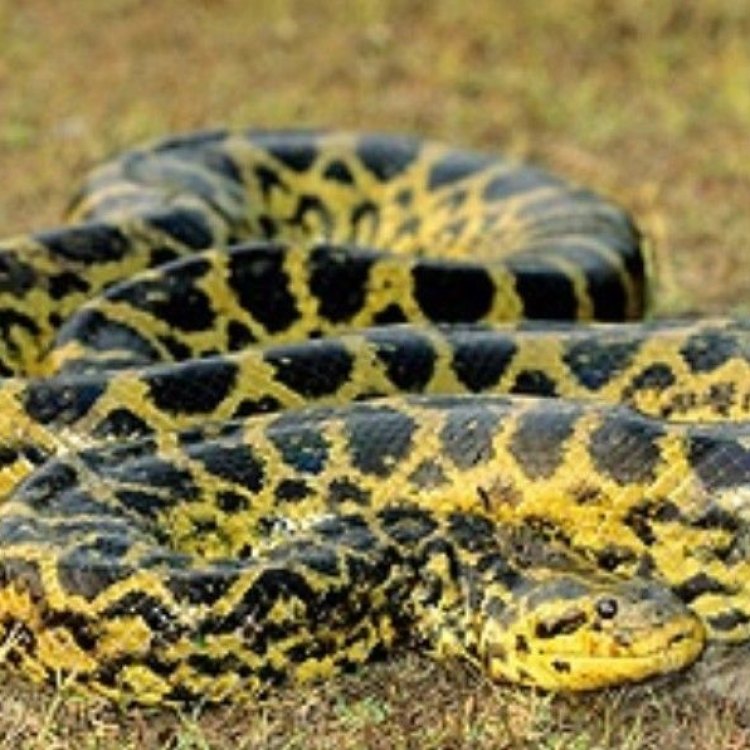
Yellow Anaconda
- Adult Size: Can reach up to 20 feet
- Average Lifespan: Up to 20 years
- Reproduction: Sexual reproduction
- Reproductive Behavior: Males engage in combat for dominance and mating rights
- Sound or Call: Unknown
- Migration Pattern: Unknown
- Social Groups: Solitary
- Behavior: Nocturnal and primarily aquatic
- Threats: Habitat loss, pollution, hunting for their skin and meat
- Conservation Status: Not listed under any major conservation status
- Impact on Ecosystem: Top predator in its ecosystem, helps regulate prey populations
- Human Use: Kept in captivity for educational and conservation purposes
- Distinctive Features: Large size, yellow coloration with dark blotches or spots
- Interesting Facts: Yellow Anacondas are one of the largest snake species in the world
- Predator: Humans, caimans, and jaguars
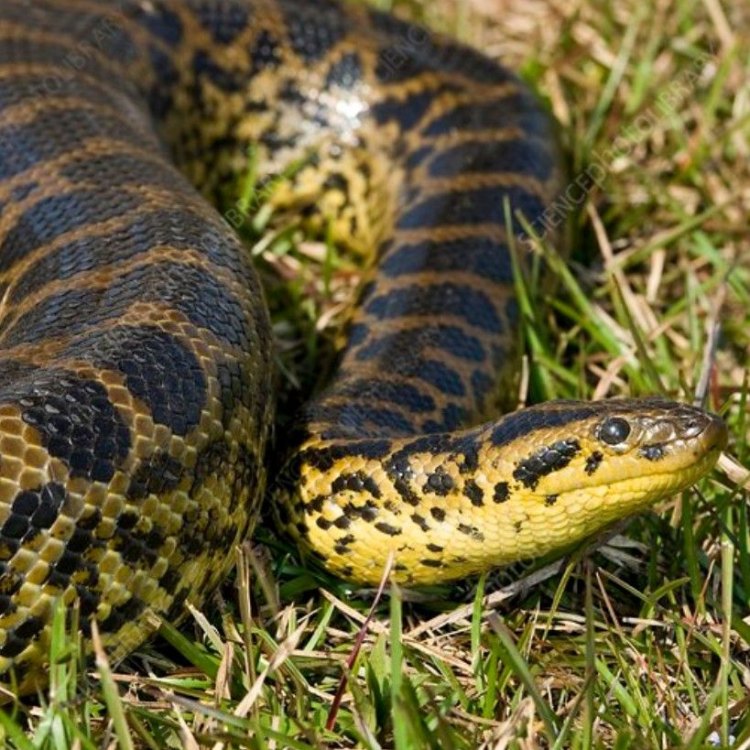
Eunectes notaeus
The Mighty Yellow Anaconda: A Fascinating Predator of the Waters
In the depths of the Amazon basin, lurks a deadly predator that can reach up to 20 feet in length and live up to 20 years - the mighty Yellow Anaconda. With its large size, yellow coloration, and distinctive dark blotches or spots, this snake species has captivated the imaginations of many nature enthusiasts and researchers alike. In this article, we will explore the unique features of the Yellow Anaconda and its important role in its ecosystem.Native to South America, the Yellow Anaconda, also known as Eunectes notaeus, is a member of the boas and pythons family PeaceOfAnimals.Com. It is one of the largest snake species in the world, second only to the Green Anaconda - its close relative. Unlike the Green Anaconda, which is more widespread and can be found in various habitats, the Yellow Anaconda is restricted to the wetlands and swamps of southern Brazil, Paraguay, and northern Argentina.
One of the most impressive features of the Yellow Anaconda is its size. It can grow up to 20 feet in length and weigh as much as 200 pounds. This remarkable size makes it a top predator in its ecosystem, and it plays a crucial role in regulating the populations of prey species. Its diet mainly consists of aquatic animals such as fish, turtles, and birds, but it has also been known to prey on mammals, including capybaras and deer.
Apart from its impressive size, the Yellow Anaconda is also known for its distinctive coloration. While it may not be as striking as its green counterpart, the Yellow Anaconda's yellow coloration with dark blotches or spots serves as camouflage, allowing it to blend in with the vegetation and ambush its prey.
Reproduction in Yellow Anacondas is through sexual reproduction, and it has been observed that males engage in combat for dominance and mating rights Yellow Bellied Sapsucker. During the mating season, males will wrestle and intertwine their bodies, trying to assert dominance over each other. This behavior, known as "combat dances," can last up to several hours and can sometimes result in injuries. Once a dominant male is established, he will mate with several females within his territory.
One interesting fact about Yellow Anacondas is that they are solitary animals. They prefer to live and hunt alone, only coming together during mating season. This behavior is more common among females, who are known to be more territorial than males.
Yellow Anacondas are primarily aquatic, spending most of their time in or near bodies of water. They are also nocturnal, which means they are most active at night. This behavior allows them to avoid the high temperatures that are common in their habitat during the day.
Despite their large size and predatory nature, Yellow Anacondas do have natural predators. Humans, mainly through hunting for their skin and meat, are one of the main predators of these snakes. Additionally, caimans and jaguars have also been known to prey on Yellow Anacondas.
However, the main threat to Yellow Anacondas is habitat loss due to human activities such as deforestation and pollution. The wetlands and swamps where they reside are often drained or degraded for agriculture, resulting in the loss of their primary habitat. This, combined with the illegal hunting of these snakes, has led to a decline in their population. As a result, the International Union for Conservation of Nature (IUCN) has classified the Yellow Anaconda as a species of "least concern." However, more research is needed to fully understand the population and conservation status of this species.
Despite their fearsome reputation and the threats they face, Yellow Anacondas have also been beneficial to humans. In some parts of South America, they are kept in captivity for educational and conservation purposes. These snakes play a crucial role in maintaining the balance of their ecosystem, and by studying them, researchers can gain valuable insights into the health of wetland habitats.
In conclusion, the Yellow Anaconda is a remarkable and unique species of snake with its large size, distinctive coloration, and interesting behaviors. As one of the top predators in its ecosystem, it helps regulate prey populations and contributes to the overall health of its habitat. While they may face threats such as habitat loss and illegal hunting, efforts are being made to conserve this vital species. Perhaps by understanding and appreciating these fascinating creatures, we can work towards a more sustainable future for both humans and wildlife.
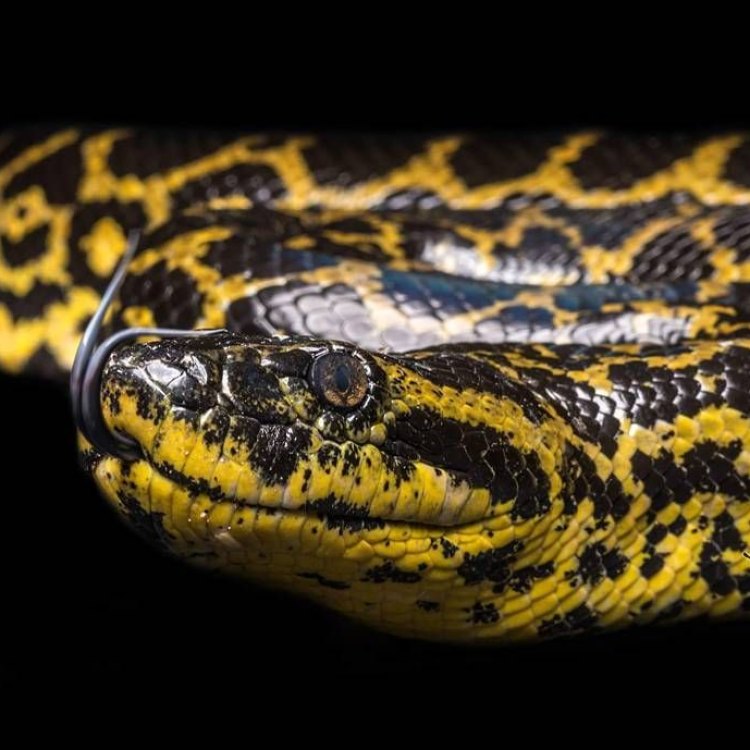
The Mighty Yellow Anaconda: A Master Predator of the South American Waters
Disclaimer: The content provided is for informational purposes only. We cannot guarantee the accuracy of the information on this page 100%. All information provided here may change without prior notice.

